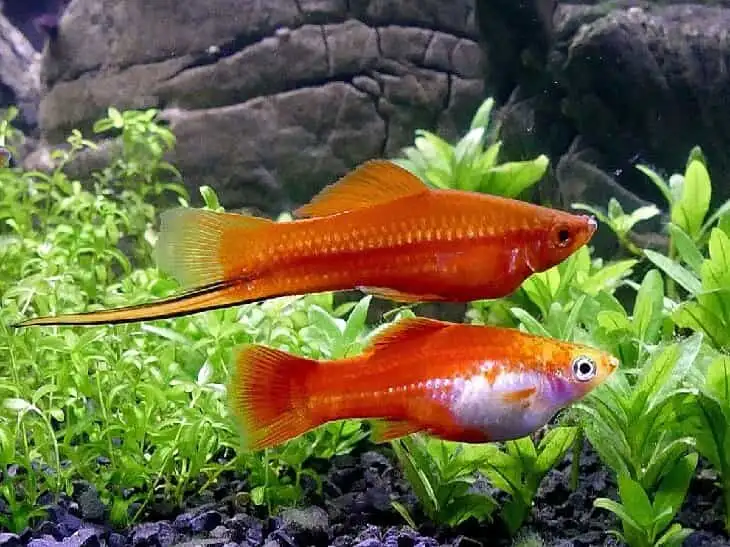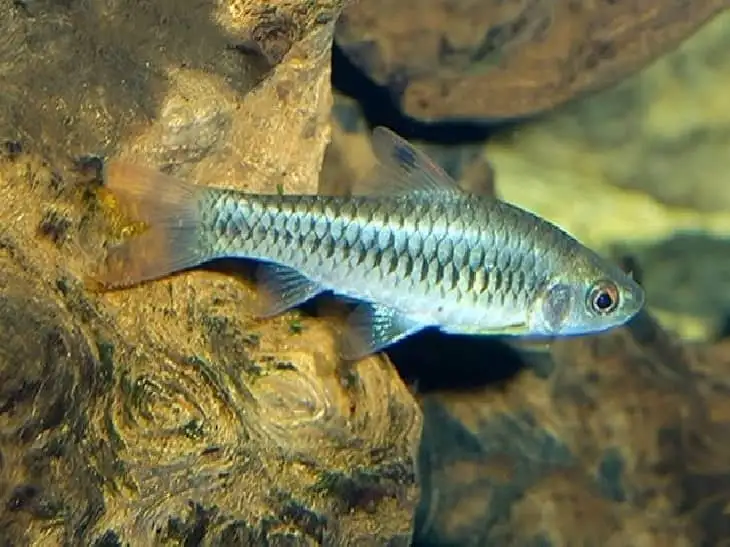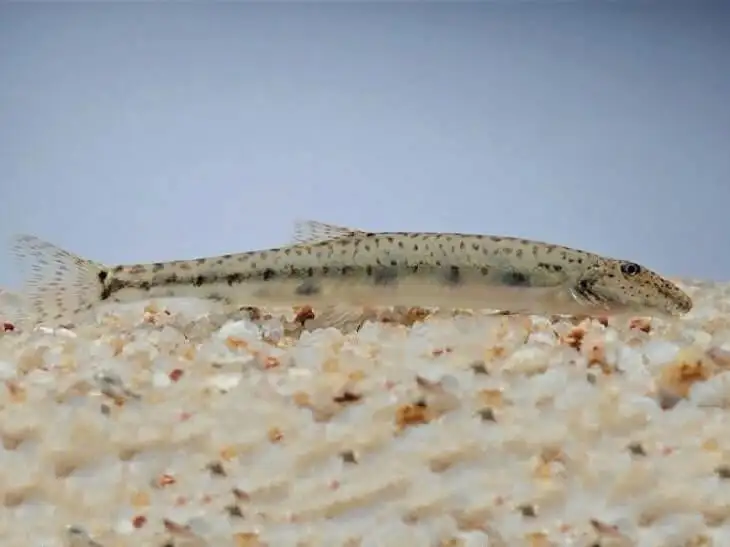Synodontis decorus

Synodontis decorus occurs naturally in reservoirs in the Republic of Congo and Cameroon. The fish can be found in slow currents and in flooded areas during the rainy season. Due to their large size these fish are not recommended for novice aquarists.
Adult males are slightly darker and smaller than females. The sex of the fish can be determined accurately when they reach sexual maturity, which occurs at the age of 2. The maximum fish size is 30 cm.
Synodontis decorus has a slightly elongated and laterally compressed body. The body is coloured pale brown with large black spots. The entire head is dotted with small black speckles. The elongated filamentous ray of the dorsal fin is a sort of trademark of this fish. There are barbs on the dorsal plumage and lateral fins. There is also a fairly large adipose fin. The fish has large eyes. There are three pairs of antennae near the mouth.
Keeping Synodontis decorus is recommended in an aquarium volume of 200 liters. Coarse-grained river sand is used as substrate. At the bottom of the need to arrange the snags and large stones so that between them were formed numerous caves of a size that fish can swim freely in there. Preferably place bushes of floating plants such as pistias on the water surface. Planting shrubs on the bottom is possible, but not required.
Despite its rather impressive size Sinodontis flagellates fairly peaceful with respect to the fish, which they can not swallow, but smaller fish better to share with them. Good neighbours in a shared aquarium are large barbs and cichlids.
Water parameters: temperature 22-27° C, hardness dH 3-25°, pH 6,0-8,0. Requires filtration, aeration and a weekly change of ¼ of the aquarium water with fresh.
Pisces do not like bright lights and during daylight hours will always hide in hiding.
Synodontis decorus is an omnivorous fish. In the wild, it feeds on crustaceans, algae and insect larvae. Under aquarium conditions, it is fed frozen, live and dried flakes and tablets. The fish are also fed plant food in the form of peeled green peas, cucumber and courgette slices, blanched spinach leaves and lettuce. Feed the fish in the evening, before turning off the lighting in the aquarium.
Reproduction
Synodontis decorus do not propagate in the aquarium. There is information on successful breeding fish in Eastern Europe using hormone injections. Many of the fry entering the domestic market may have been bred in this way.
In the wild, fish breed during the rainy season in flooded areas rich in microorganisms. The females scatter their eggs chaotically among the grass and fallen leaves of trees. The parents don't take care of the eggs and fry.







